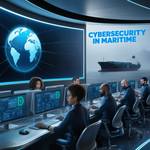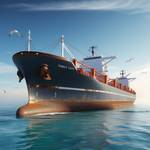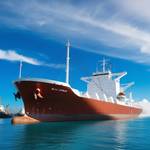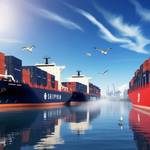
Naval forces globally are undergoing a profound transformation, driven by an accelerating pace of technological innovation and evolving geopolitical landscapes. This article explores the cutting-edge advancements that are redefining maritime defense and offense. From the integration of artificial intelligence and unmanned systems to the development of directed energy weapons and advanced stealth capabilities, we delve into how these innovations are enhancing situational awareness, extending operational reach, and enabling new forms of naval warfare. The future fleet will be characterized by networked, intelligent, and highly adaptable platforms, operating across multiple domains to secure sea lanes and project power more effectively than ever before.
The global maritime industry is under immense pressure to meet ambitious climate targets, spearheaded by the International Maritime Organization (IMO)'s strategy to reach net-zero emissions by or around 2050. This mandate has triggered the most significant technological and financial upheaval the sector has ever faced. This article explores the core challenge—the decarbonization dilemma—focusing on the complex regulatory landscape (CII, ETS) and the intense, multi-fuel race to find viable, scalable, and safe "green fuels." We analyze the leading contenders—ammonia, methanol, and hydrogen—highlighting their pros, cons, and the colossal infrastructure investment required to power the future of global shipping.

The global maritime industry is on the cusp of a profound transformation, driven by rapid decarbonization, advanced digitalization, and an increasingly complex regulatory landscape. This article explores how these forces are reshaping the skills, roles, and welfare needs of the maritime workforce. From the demand for "green" engineering expertise to the rise of remote operations and AI-driven systems, we delve into the challenges and opportunities in attracting, training, and retaining the talent essential for sustainable and efficient shipping. The future maritime professional will be a highly adaptable, digitally fluent, and environmentally conscious individual, operating within an industry that must prioritize human-centric approaches to truly thrive.
U.S. Rebuilding Shipbuilding Industry with Policy and InvestmentThe U.S. government is launching a new era for shipbuilding, with a focus on industrial base renewal, national security, and economic growth. Key developments include:The establishment…
Blockchain technology, initially developed as the backbone of cryptocurrencies like Bitcoin, is now making waves in the shipping industry. With its ability to provide secure, transparent, and tamper-proof records, blockchain is poised to revolutionize global supply chains, addressing some of the most persistent challenges in maritime logistics, including inefficiencies, fraud, and lack of transparency.

The maritime industry, a cornerstone of global trade, is undergoing a significant transformation through the adoption of digitalization and smart shipping technologies. As the industry navigates the challenges of efficiency, sustainability, and safety, digital solutions are emerging as key drivers of change. From enhanced operational efficiency to real-time data analytics, digitalization is revolutionizing how ships and ports operate, paving the way for a smarter, more connected maritime future.
Navy Welcomes 17th Master Chief Petty Officer of the Navy, John PerrymanThe U.S. Navy officially welcomed John Perryman as its 17th Master Chief Petty Officer of the Navy (MCPON), the highest enlisted position. The ceremony held at the United States Navy Memorial in Washington…
New propulsion systems reduce shipping emissions through several key mechanisms, contributing to lower fuel consumption, increased energy efficiency, and adoption of cleaner energy sources:1. Hybrid Propulsion SystemsHybrid systems combine traditional engines with electric motors and batteries…

Cutting-Edge Electric Propulsion for Container ShipsHD Korea Shipbuilding & Offshore Engineering and HD Hyundai Heavy Industries received Approval in Principle (AIP) from ABS for a concept design of a 16,000 TEU container ship featuring an electric propulsion system.
3D printing, also known as additive manufacturing, is rapidly gaining traction in the shipbuilding industry. This innovative technology allows for the creation of complex components and structures by adding material layer by layer, rather than subtracting it from a larger block. As the maritime sector seeks to enhance efficiency, reduce costs, and improve sustainability, 3D printing is emerging as a powerful tool that has the potential to revolutionize shipbuilding and repair processes.

The maritime industry is on the brink of a revolutionary transformation with the advent of autonomous ships. These vessels, capable of operating without human intervention, represent a significant leap forward in technology, promising to reshape the future of global shipping. Autonomous ships, also known as unmanned vessels, are designed to navigate and perform various operational tasks using advanced sensors, artificial intelligence (AI), and communication systems. This innovation is set to enhance efficiency, safety, and sustainability in the maritime sector.
The maritime industry is undergoing a significant transformation as it seeks to reduce its environmental impact and comply with increasingly stringent regulations on emissions. One of the most promising avenues for achieving these goals is the adoption of alternative fuels in marine propulsion systems. These fuels, including liquefied natural gas (LNG), biofuels, hydrogen, and ammonia, offer various benefits and challenges that are reshaping the future of marine propulsion. This article provides a technical overview of the key alternative fuels currently being explored and their implications for the maritime industry.

As the maritime industry undergoes a digital transformation, the integration of advanced technologies such as automation, Internet of Things (IoT), and big data is revolutionizing operations. However, this digital shift also brings significant risks, particularly in the realm of cybersecurity. Protecting maritime assets, systems, and data from cyber threats has become a critical priority as the industry becomes more connected and reliant on digital infrastructure.

The maritime industry is on the brink of a revolution, with autonomous and unmanned marine vehicles poised to redefine the future of shipping. These innovative vessels, powered by advanced technologies and cutting-edge propulsion systems, offer numerous advantages, including increased efficiency, reduced operational costs, and enhanced safety. In this article, we'll explore the current state of autonomous marine vehicles, their propulsion systems, and the potential impact they may have on the global shipping industry.

Tanker ships are an important component of the maritime sector, and they transport liquid cargoes around the world. These vessels are vital to the supply chain for energy, chemicals and other essential commodities. There are many types of tankers, each designed for specific cargoes such as oil, LNG, chemicals, or other liquids.

Bulk carriers are vessels that transport bulk cargo, such as coal, ore and cement. Bulk carriers play an important role in the global trade, facilitating the transportation of large quantities essential raw materials for different industries.

Container ships are vessels designed specifically to transport standardized containers. Container ships have revolutionized shipping, making it more cost-effective and efficient to transport goods across oceans.
Drug smuggling has long been a lucrative enterprise for criminal organizations worldwide. With the increasing sophistication of law enforcement agencies and border controls, smugglers are continuously adapting their methods. One of the most challenging trends to combat is the use of ships and submarines to transport illicit drugs across international waters. This article explores the methods, routes, and challenges associated with maritime drug smuggling.
Narco-submarines, the clandestine vessels used by drug traffickers, represent one of the most sophisticated and elusive methods of smuggling drugs across international waters. These semi-submersible and fully submersible crafts are a testament to the ingenuity and resourcefulness of criminal organizations in circumventing law enforcement efforts. This article delves into the history, construction, operation, and interdiction of narco-submarines, highlighting their impact on global drug trafficking.
The vast, open oceans have long served as conduits for commerce, adventure, and exploration. However, along with the grandeur of maritime activities comes inherent risks, one of which is the specter of armed robbery at sea. Also known broadly as maritime piracy, this menacing threat envelops not just the economic marine highway but also the lives and safety of those who navigate it.

















